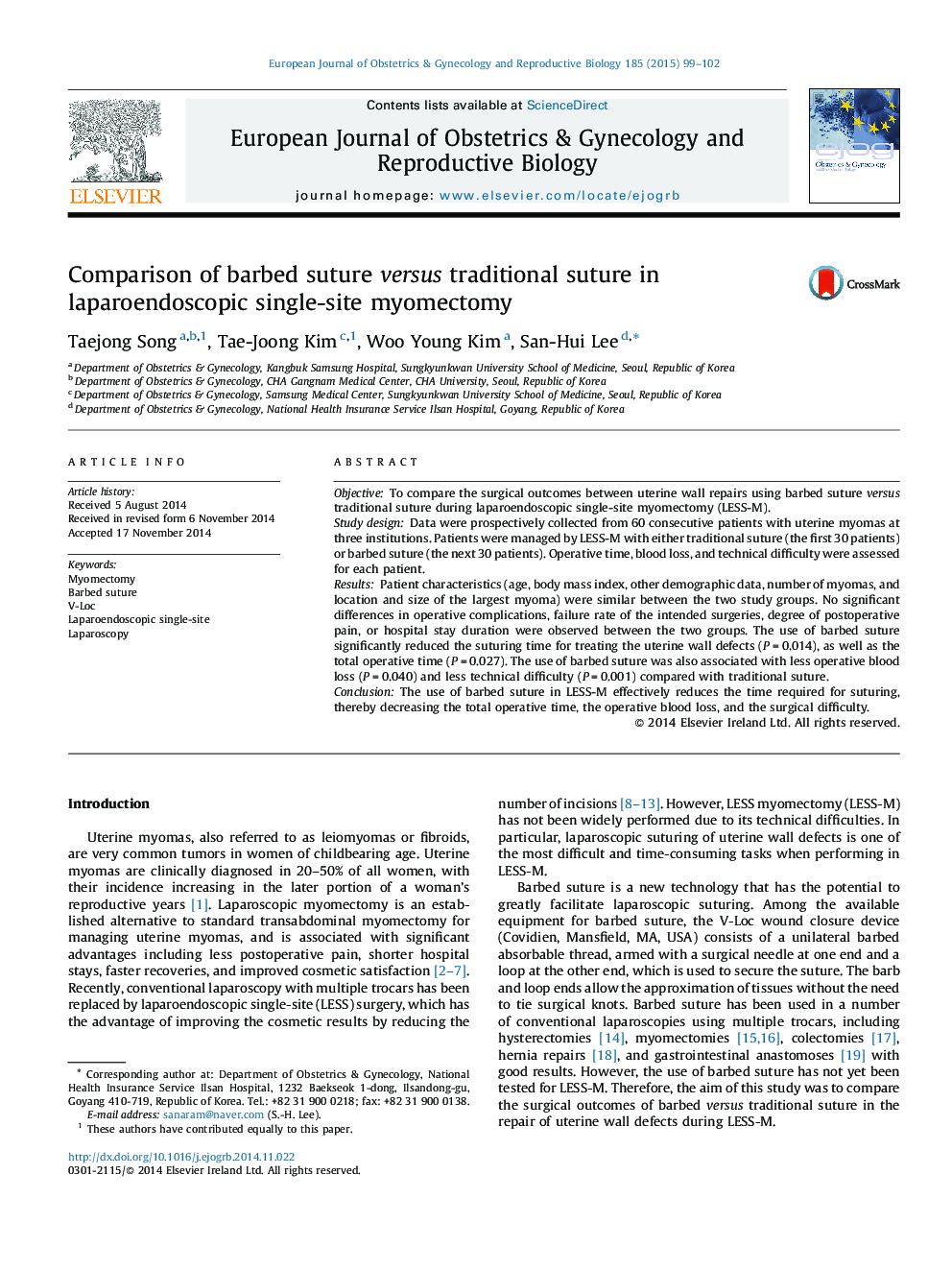| Article ID | Journal | Published Year | Pages | File Type |
|---|---|---|---|---|
| 3919673 | European Journal of Obstetrics & Gynecology and Reproductive Biology | 2015 | 4 Pages |
ObjectiveTo compare the surgical outcomes between uterine wall repairs using barbed suture versus traditional suture during laparoendoscopic single-site myomectomy (LESS-M).Study designData were prospectively collected from 60 consecutive patients with uterine myomas at three institutions. Patients were managed by LESS-M with either traditional suture (the first 30 patients) or barbed suture (the next 30 patients). Operative time, blood loss, and technical difficulty were assessed for each patient.ResultsPatient characteristics (age, body mass index, other demographic data, number of myomas, and location and size of the largest myoma) were similar between the two study groups. No significant differences in operative complications, failure rate of the intended surgeries, degree of postoperative pain, or hospital stay duration were observed between the two groups. The use of barbed suture significantly reduced the suturing time for treating the uterine wall defects (P = 0.014), as well as the total operative time (P = 0.027). The use of barbed suture was also associated with less operative blood loss (P = 0.040) and less technical difficulty (P = 0.001) compared with traditional suture.ConclusionThe use of barbed suture in LESS-M effectively reduces the time required for suturing, thereby decreasing the total operative time, the operative blood loss, and the surgical difficulty.
